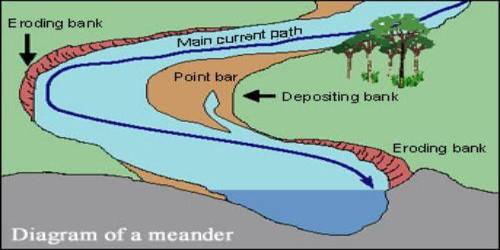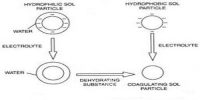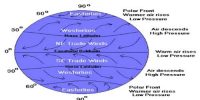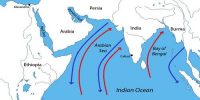Meanders: Depositional Landforms
In large flood and delta plains, rivers rarely flow in straight courses. Loop-like channel patterns called meanders develop over flood and delta plains (Figure). A meander is one of a series of regular sinuous curves, bends, loops, turns, or windings in the channel of a river, stream, or other watercourses.
Meander is not a landform but is only a type of channel pattern. This is because of
- the propensity of water flowing over very gentle gradients to work laterally on the banks;
- unconsolidated nature of alluvial deposits making up the banks with many irregularities which can be used by water exerting pressure laterally;
- coriolis force acting on the fluid water deflecting it like it deflects the wind.
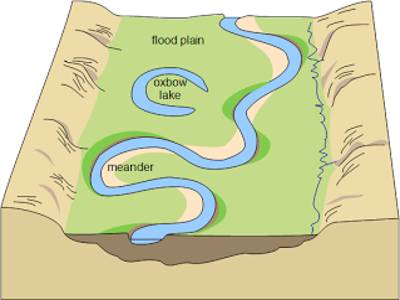
When the gradient of the channel becomes extremely low, water flows leisurely and starts working laterally. Slight irregularities along the banks slowly get transformed into a small curvature in the banks; the curvature deepens due to deposition on the inside of the curve and erosion along the bank on the outside. If there is no deposition and no erosion or undercutting, the tendency to meander is reduced. Normally, in meanders of large rivers, there is active deposition along the convex bank and undercutting along the concave bank.
The concave bank is known as a cut-off bank which shows up as a steep scarp and the convex bank presents a long, gentle profile and is known as the slip-off bank. As meanders grow into deep loops, the same may get cut-off due to erosion at the inflection points and am left as ax-bow lakes.
